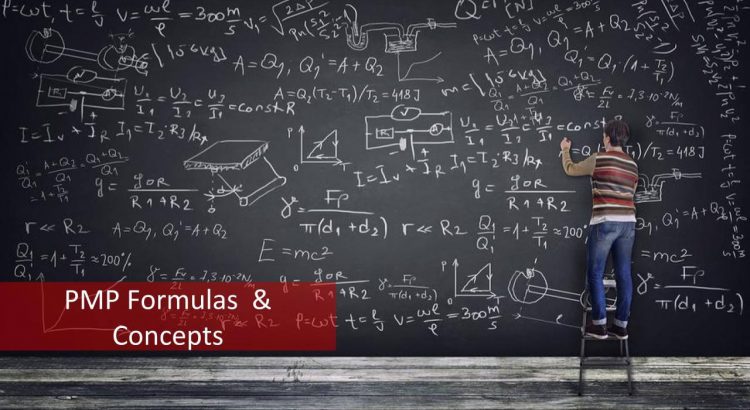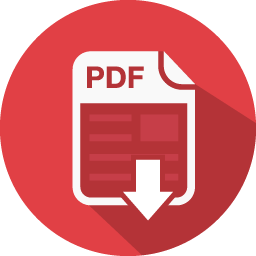Are you preparing for the PMP exam? Do you have trouble with recalling PMP Formulas? So you should consider getting ready for the PMP exam with a good PMP exam prep. There is a number of areas you need to focus on to set yourself on the right track. One of the parts that some PMP aspirants consider difficult is the math calculations. Because there are many PMP formulas to memorize. PMP formulas and PMP certification exam cheat sheets can help you to remember these easily. Also, there are some Frequently Used Concepts in the PMP certification exam that you must know by heart. So learning PMP formulas the easy way will be very helpful in your PMP journey.
Tip: Downloadable PMP formula sheet and PMP exam cheat sheet pdfs are ahead. Do not skip this post!
Attend our 100% Online & Self-Paced One-Hour Free PMP Training.
What are the PMP Formulas and What are the PMP Concepts?
We use project management formulas in various project planning activities. These include but are not limited to resource management, PMP cost management formulas, and schedule estimation. We also use them in risk estimation activities like EMV (earned value management), in addition, to monitor and control activities. Therefore, in this article, we will cover the most important PMP formulas and provide you PMP formulas cheat sheet. Because in the PMP Exam too you will see formula-based questions.
On the other hand, PMP Concepts include a number of concepts that Project Management Institute (PMI) regularly uses in PMP exams alongside the PMP formulas. PMI uses these concepts to test your understanding of basic project management terminology. These concepts include OPA, EEF, and other similar concepts. We will cover them in the PMP exam cheat sheet as well.

After helping over 200,000 professionals in more than 180 countries with a 99.6% first attempt pass rate, we have prepared a seven-step PMP study plan. Read this PMP study plan and create your own PMP prep plan accordingly.
Why must you know PMP Formulas?
The percentage of questions that are based on PMP formulas ranges from 5% to 10%. This means there are around 10 to 20 questions, so it seems a pretty small portion right?! Then you need to rethink your exam strategy! Although the number seems small, PMP formulas are quick wins, because PMP formulas-based questions vary from direct to complex. The fact that PMI doesn’t reveal the exact PMP exam passing score, proves the significance of these questions. You can find more details about the PMP exam pass rate in our blog.
Watch our “What are the PMP® formulas and Earned Value Formulas?” video
15 PMP Formulas You Must Know
In this section of the post, we will go through the 15 PMP formulas you must know to answer PMP math questions correctly. Note that, these formulas will be under two headings:
- A- ) Critical Path Method (CPM) Related PMP Formulas
- B- ) Earned Value Management (EVM) PMP Formulas
Let’s go over them one by one and learn the details of each PMP formula.
A- ) Critical Path Method (CPM) related PMP formulas
The first set of PMP formulas we will provide are related to the Critical path method.
PMP Formulas #1: PERT Distribution
There are two types of this PERT distribution: triangular and beta.
PERT Triangular Distribution
It’s one of the most important PMP formulas and we use it to calculate duration, cost, and resource estimates. To calculate Estimated Activity Duration (EAD), you need to determine the activity Optimistic (O), Most Likely (M) and Pessimistic (P) estimates first. Then you can use PERT Triangular Distribution to estimate the activity duration. Accordingly, the PMP formula for PERT Triangular Distribution is as follows:
EAD = (𝑂 + 𝑀 + 𝑃)/3
PERT Beta Distribution
It’s one of the most important PMP formulas and we use it to calculate duration, cost, and resource estimates. Similar to the previous formula, to calculate (EAD), you need to determine activity (O), (M), and (P) estimates first. Then you can use PERT Beta Distribution to estimate the activity duration. Accordingly, the formula for PERT Beta Distribution is as follows:
EAD=(𝑂+4𝑀+𝑃)/6
Standard Deviation (SD) of an Activity
Standard Deviation (SD) measures the Variation from Average. As a result, a low value of SD indicates that the data points are close to the Average. On the other hand, a high value of SD indicates the spread out of data points over a large range. Accordingly, the formula for Standard Deviation is as follows:
(SD)=(𝑃−𝑂)/6
The variance of an Activity
We use this formula result as an indicator of activity risk level, which prompts the course of action to take. Activity variance calculation involves taking the square of activity standard deviation.
Variance=((𝑃−𝑂)/6)^2
The range of an Activity Duration
The range of an Activity Duration serves the same purpose as Standard Deviation (SD) and Variance. To calculate the end of the range you add the Standard Deviation to Estimated Activity Duration. On the other hand, to calculate the start of the range you subtract Duration Standard Deviation from Estimated Activity. Accordingly, the formula for the Range of an Activity Duration is as follows:
The range of an Activity Duration=EAD±𝑆𝐷
Watch Alan’s “New” PMP® Exam Journey Interview
PMP Formulas #2: Float (Slack) Formulas
The float (Slack) of activity determines how long an activity can be delayed without affecting the project end date. Accordingly, if an activity is on the critical path, the float (slack) of that activity will be zero. In order to calculate an activity Float, first, we determine the Late Start (LS) and Early Start (ES) values of the activity. Alternatively, we may use Late Finish (LF) and Early Finish (EF) values. Accordingly, the formula for Total Float is as follows:
Total Float = Late Start (LS) – Early Start (ES)
Total Float = Late Finish (LF) – Early Finish (EF)

B- )Earned Value Management (EVM) PMP Formulas
To understand PMP formulas related to Earned Value Management you need to know the following abbreviations:
- Earned Value = EV
- Planned Value = PV
- Actual Cost = AC
- Cost Variance = CV
- Schedule Variance = SV
- Cost Performance Index = CPI
- Schedule Performance Index = SPI
- Budget at Completion = BAC
- Estimate to Complete = ETC
- Estimate at Completion = EAC
- Variance at Completion = VAC
- To-Complete Performance Index = TCPI
PMP Formulas #3: Cost Variance (CV)
Cost Variance represents the amount of budget deficit or surplus at a given point in time. Basically, we express it as the difference between earned value EV and the actual cost. Accordingly, its formula is as follows:
CV=EV−AC
PMP Formulas #4: Schedule Variance (SV)
Schedule Variance’s aim is to measure schedule performance through the difference between the earned value EV and the planned value. Accordingly, its formula is as follows:
SV=EV−PV
PMP Formulas #5: Cost Performance Index (CPI)
One of the most common PMP formulas for control cost is Cost Performance Index CPI. It measures the cost efficiency of budgeted resources, expressed as a ratio of earned value to actual cost. Accordingly, its formula is as follows:
CPI=𝐸𝑉/𝐴𝐶
PMP Formulas #6: Schedule Performance Index (SPI)
The schedule performance index SPI is a measure of schedule efficiency, it represents the ratio of earned value to planned value. It is one of the most common PMP formulas for control schedule. Its aim is to measure how efficiently the project team is accomplishing the work. Accordingly, its formula is as follows:
SPI=𝐸𝑉/𝑃𝑉
PMP Formulas #7: Budget at Completion (BAC)
We determine BAC during the cost management activities, more specifically in Determine Budget Process of a project. BAC includes contingency reserves for activities and defines how much money will be spent during the project in total. Accordingly, its formula is as follows:
Total Budget = Total activity cost estimates + Total contingency cost reserves
PMP Formulas #8: Estimate to Complete (ETC)
Estimate to Complete (ETC) represents the expected cost to finish all the remaining project work. ETC can be determined by re-estimation of the remaining works in a project. In this case, its formula is as follows:
ETC=Re-estimation of Remaining Works
Also, we can calculate it by subtracting the Actual cost (AC) of the accomplished activities from EAC. Assuming the work is proceeding as planned, we can calculate it using this formula
ETC=EAC−AC
PMP Formula #9: Estimate at Completion (EAC)
The expected total cost of completing all work is expressed as the sum of the actual cost to date and the estimated sum to complete the project. It is one of the most common PMP formulas. We can find EAC value by 3 different approaches using EV, SPI, and CPI values.
Approach #1: It assumes that all future ETC work will be accomplished at the budgeted rate. Accordingly, its formula is as follows:
EAC=AC+(BAC−EV)
Alternatively, Approach #2: Assumes that we expect the achieved cost performance till now will continue in the future. Accordingly, its formula is as follows:
EAC=BAC/CPI
On the other hand, Approach #3: Assumes that we will perform ETC work at an efficiency rate that considers both the cost and schedule performance indices. Accordingly, its formula is as follows:
EAC=AC+[(BAC−EV)/(CPI x SPI)]
PMP Formulas #10: Variance at Completion (VAC)
Variance at Completion VAC is a projection of the amount of budget deficit or surplus, it represents the difference between the budget at completion and the estimate at completion EAC. Accordingly, its formula is as follows:
VAC=BAC−EAC

PMP Formulas #11: To-Complete Performance Index (TCPI)
TCPI is a measure of the cost performance in order to achieve meeting a specified management goal with the remaining resources. It represents the ratio of the cost to finish the outstanding work to the budget available.
There are two approaches to calculating TCPI. Firstly, If there isn’t a new EAC value, we use the 1st approach. If there is an EAC value, then we use the 2nd approach.
Approach #1: TCPI=(𝐵𝐴𝐶−EV)/(BAC−AC)
Approach #2: TCPI=(𝐵𝐴𝐶−EV)/(EAC−AC)
PMP Formulas #12: Present Value Formula
One of the PMP formulas focuses on the time value of money and the value of a future cash flow is less today than its amount in the future. It is used in the project selection process. We calculate this through the Present Value (PV) formula. In order to understand the formula you need to know the following abbreviations of terms:
- Present Value = PV
- Future Value = FV
- Interest rate = r
- Number of periods = n
Thus the formula is PV=FV/(1+r)^n
PMP Formulas #13: Number of Communication Channels Formula
We use this formula to decide on the complexity of project communication. In other words, if there are N stakeholders in an environment, the following formula will give the total number of communication channels between stakeholders in this environment.
Number of Communication Channels=N*(N−1)/2
PMP Formulas #14: Expected Monetary Value
We usually use it in risk quantitative analysis to measure the EMV of an opportunity or threat. we calculate it by the following formula:
EMV=Probability x Impact
PMP Formulas #15: Point of Total Assumption (PTA)
PTA is applicable only in Fixed Price Incentive Fee (FPIF) Contracts. Costs above the PTA level are considered to be due to mismanagement. PTA is calculated by the following formula:
PTA= [(Ceiling Price − Target Price)/ Buyer′s Sharing Ratio )]+ Target cost
PMP Formulas PDF
We have gone through the 15 PMP formulas you must know to answer PMP math questions correctly. We have prepared a PMP certification mathematics PDF download option including all these formulas. You can find all the mentioned PMP formulas in this PMP exam formula study guide free download
After reviewing the PMP formulas PDF, if you want to assess your know-how about these PMP formulas we suggest you to benefit from a PMP exam simulator.
PMP Cheat Sheet – What are the most frequently occurring PMP concepts?
PMP includes a number of special concepts that we use frequently. Following are examples of the most important PMP concepts:
- Organizational Process Assets
- Enterprise Environmental Factors
- Project Management Plans
- Baselines, Etc.
We will cover these PMP concepts in this article and provide a PMP cheat sheet PDF for remembering these concepts during your PMP study.
Watch our “How should I use PMP® cheat sheets?” video
PMP Cheat Sheet Concept #1: Organizational Process Assets (OPA)
OPA includes plans, processes, policies, procedures, and knowledge bases specific to and used by the performing organization. Following are some examples of OPA:
- Effort estimation procedures
- Project Plan Templates
- Lessons Learned documentation of previous projects
- Project Resource assignment policy
- Company Knowledge Base
PMP Cheat Sheet Concept #2: Enterprise Environmental Factors (EEF):
EEF are conditions that are not under the control of the project team. They influence, constrain or direct the project. Following are examples of EEF:
- Company culture, structure, and governance
- Government or Industry Standards
- Political Climate (e.g. if there is harsh competition between you and another company)
- Marketplace condition (e.g. if there is a price war between companies in the same market)

PMP Cheat Sheet Concept #3: Project Management Plans:
There are management plans for each knowledge area and these management plans constitute the Project Management Plan together with other Management Plans. Following the three categories of project management plans:
Subsidiary management plans
It mainly includes knowledge areas management plans:
- Scope management plan
- Requirements management plan
- Schedule management plan
- Cost management plan
- Quality management plan
- Resources management plan
- Communications management plan
- Risk management plan
- Stakeholder engagement plan
Baselines:
They consist of the approved versions of scope, cost, and schedule management plans we use as a basis for comparison to the actual results:
- Scope baseline: The approved version of a scope statement, work breakdown structure, and its WBS dictionary.
- Schedule baseline: The approved version of the schedule model.
- Cost baseline: The approved version of the time-phased project budget
Additional components
- Change management plan: It describes how the change requests throughout the project will be formally authorized and incorporated.
- Configuration management plan: It describes how the information about the project’s items will be recorded and updated so that the project product remains consistent and operative.
- Performance measurement baseline: An integrated scope, schedule, and cost plan for the project work compared to project execution to measure and manage performance.
- Project lifecycle: It describes the series of phases that a project passes through from its initiation to its closure.
- Development approach: It describes the product, service, or result in the development approach, such as predictive, iterative, agile, or a hybrid model.
- Management reviews: It identifies the project points when the project manager and relevant stakeholders will review the project progress to measure performance.
Knowing the discussed PMP formulas and understanding these PMP cheat sheet concepts is very important for PMP exam takers. Also, it gives you a great opportunity to cover key points within your exam.
We have covered all these frequently occurring concepts in the PMP exam in the PMP exam cheat sheet free download option. You can find all the mentioned PMP concepts in this PMP cheat sheet pdf


